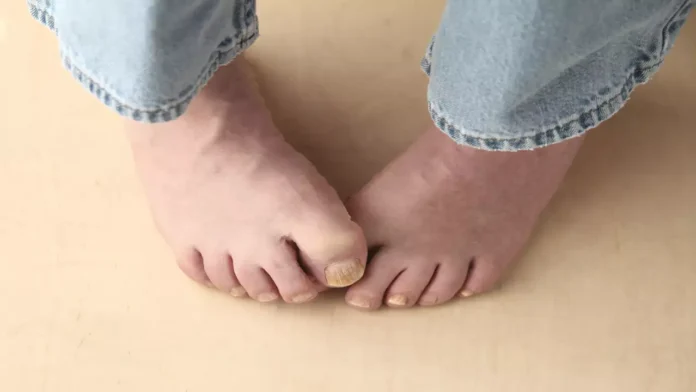It’s no secret that fungal toenails are an incredibly common issue, affecting at least one in five people. While the source of these infections can range from athlete’s foot to even plain old genetics, there are a few tried-and-true methods for getting rid of these pesky nails. Fortunately, there are a variety of treatments available for those suffering from fungal toenails, and this article will cover some of the best remedies and tips on how to get rid of them. Read on to learn more about natural remedies, clinical treatments and more – all geared towards helping you reclaim your healthy nails again!
What are toenail fungi?
Toenail fungi, also called onychomycosis, is a common condition that occurs when a fungus infects one or more of your toenails. The most common type of fungus that causes toenail fungi is called dermatophyte. This type of fungus thrives in moist, warm environments, such as public showers or locker rooms. Other types of fungi that can cause toenail fungi include yeasts and molds.
How do you get rid of toenail fungi?
Toenail fungi, also called onychomycosis, is a common problem that can be difficult to get rid of. Here are some tips for treating and preventing toenail fungi:
-Keep your feet clean and dry. Wash your feet daily with soap and water, and dry them thoroughly afterwards.
-Wear shoes that fit well and allow your feet to breathe. If your shoes are too tight or don’t allow your feet to breath, this can make you more susceptible to developing fungi.
-Avoid walking barefoot in public places. This includes locker rooms, showers, and pools. Wear sandals or flip flops in these areas.
-Trim your nails regularly and file them down. This will help prevent the fungi from spreading.
-Apply an antifungal cream or powder to your feet. You can find these products over the counter at most pharmacies or online.
What are the best treatments for toenail fungi?
Toenail fungus, also called onychomycosis, is a common condition that causes the nails to become thick, yellow, or brittle. It can be difficult to treat because the fungus thrives in dark, moist environments. But there are several treatments that can help clear up the infection.
Antifungal medications are the first line of defense against toenail fungus. These can be taken orally or applied directly to the nail. Common oral antifungals include terbinafine (Lamisil) and itraconazole (Sporanox). Topical antifungals include ciclopirox (Penlac) and efinaconazole (Jublia).
If these medications don’t work, your doctor may recommend surgery to remove the infected nail. The procedure is called debridement and involves using a drill or laser to remove the top layer of the nail. This can be painful and may require anesthesia.
Another option is photodynamic therapy, which uses light energy to kill the fungus. This treatment is still being studied and its effectiveness is not yet known.
If you have diabetes or another condition that causes poor blood circulation, you may be at higher risk for developing toenail fungus. To help prevent this, keep your feet clean and dry, wear shoes that fit well and allow your feet to breathe, and change your socks daily. If you suspect you have a fun
How to prevent toenail fungi
Toenail fungi, also called onychomycosis, is a very common problem. It can be caused by a number of different fungi, but the most common is Trichophyton rubrum. Toenail fungi usually starts as a white or yellow spot under the tip of the toenail. As it grows, the toenail may become thickened, discolored, and crumbly. It can also cause the nail to separate from the nail bed. If you have any of these symptoms, it’s important to see a doctor so you can get treated and avoid further damage to your nails.
Conclusion In
conclusion, fungal toenails may be unsightly and uncomfortable, but the good news is that they can be treated. By following these tips for getting rid of fungal toenails, one should be able to find relief from their symptoms and clear up their condition. If your efforts are unsuccessful or if you experience severe pain or discomfort associated with your condition, it is best to consult a doctor who can provide more advanced treatments that could prove beneficial in treating your fungal infection.























